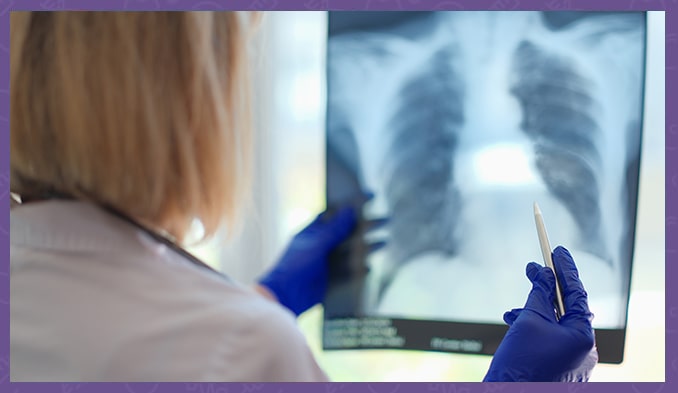What is labored breathing?
Difficulty breathing represents a feeling of shortness of breath, i.e. not enough air. Not infrequently lung and heart diseases or, for example, anaemia (organic diseases) are behind the shortness of breath. If the condition of shortness of breath occurs acutely, it is good to clarify it as quickly as possible.
What causes the feeling of shortness of breath?
Shortness of breath can be the result of many factors, but is usually caused by asthmatic complaints or occurs with infections. Often in older smokers the cause is that they have chronic obstructive pulmonary disease (COPD). However, when breathing difficulties are acute and recur frequently, then the cause may be pulmonary embolism or some rare disease such as pneumothorax. When it comes to smokers - the most common cause is COPD. We think of cardiovascular disease when shortness of breath is seen in older patients, allergies - in younger ones and sleep apnea - in people who have difficulty breathing while they sleep. Accompanying symptoms of the condition such as cough, pain and phlegm are important to identify.
What should we think about when difficulty breathing is accompanied by fatigue, a lump in the throat and swelling?
These symptoms may signal other diseases, including:
- COPD,
- pulmonary embolism,
- bronchial asthma,
- lung cancer,
- sleep apnea.
Could you share more about sleep dyspnea and straining?
The most dangerous thing for the patient is for the sensation of shortness of breath to manifest itself acutely and continue to worsen. On exertion, dyspnoea is often an indication of heart disease or asthma. When dyspnoea occurs at night it is often a sign of sleep apnoea, and if accompanied by sounds it is considered a symptom of respiratory disease. The combination of shortness of breath with numbness of the legs is considered a sign of heart failure.
When is it necessary to consult a doctor?
When symptoms appear that you haven't had before and the condition starts to worsen, it's best to see a pulmonary specialist for a consultation to further clarify the condition. Most commonly, lung function is tested and an x-ray is taken as well as a chest CT scan. If necessary, further consultation with a cardiologist and internist is done.
What treatment is administered?
Most often, respiratory problems are treated according to the cause of their occurrence. If the patient has a narrowed airway (obstruction), then inhalation therapy is most often administered to open the bronchi, and in the case of asthma or COPD - anti-inflammatory therapy. Advanced therapies, such as those with antibodies or targeting, are used when the obstruction condition is severe. If the patient suffers from chronic bronchitis, treatment with medication combined with physical methods is used to mobilize mucus, and in the case of allergies, specific therapies and prophylaxis are applied.










